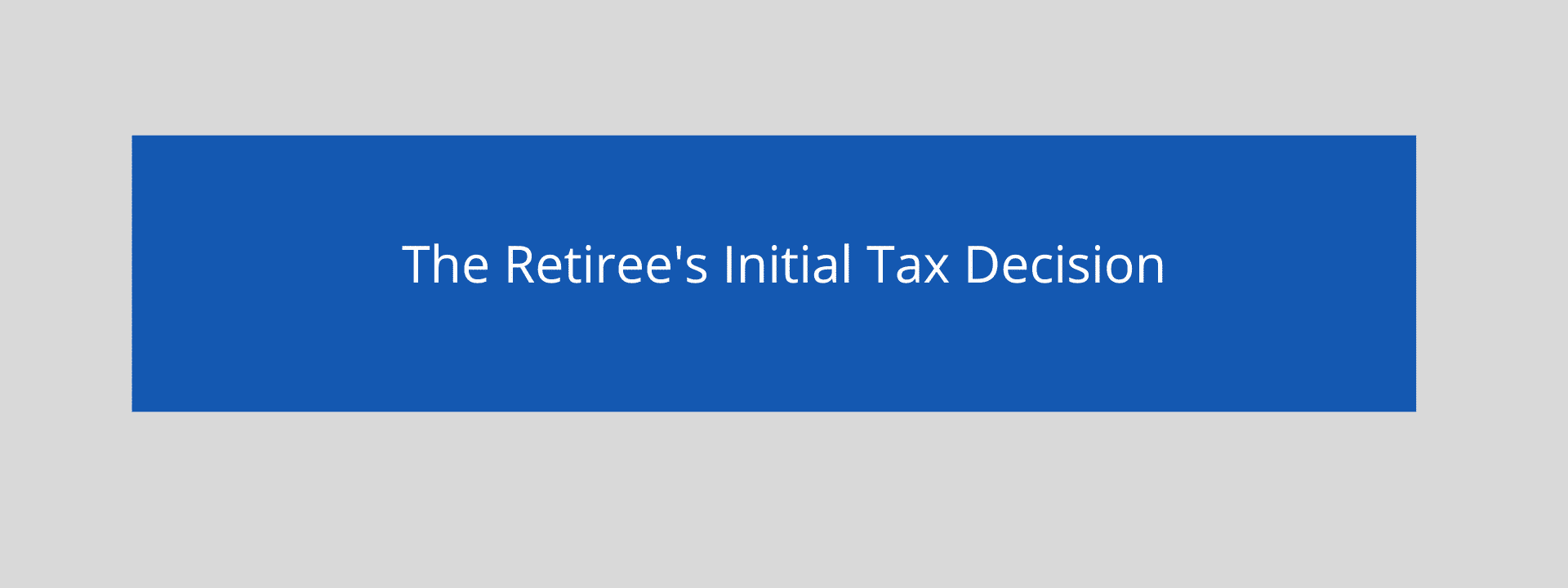Written by Jack Lumsden, MBA, CFP®, Financial Advisor, Assante Financial Management Ltd. Additional editing by ChatGPT.
In the recently released 2023 Fidelity Retirement Report, retirees’ top concerns were identified as follows:
- Minimizing taxes.
- Strategies for managing investments.
- Creating a withdrawal plan for savings/investments.
- Estate planning.
- Planning for unexpected costs/events.
Unsurprisingly, many retirees aim to reduce their tax burden while striving for a tax-efficient estate transfer to the next generation.
This situation often presents a dilemma early in retirement: Should one focus on paying fewer taxes today, thereby preserving assets for personal use, or prioritize estate maximization by paying more taxes now to leave a larger inheritance?
This is what we call the “tax teeter-totter” for retirees: balancing the desire to maximize after-tax income today against the goal of creating a more substantial estate.
Income Sequencing and Tax Planning
To address this challenge, let’s delve into two basic strategies for creating income from a retiree’s assets:
1. Sequencing Order: Taxable – Tax-Free – Tax Deferred (RRSPs/RRIFs)
- Start by drawing income from reliable income sources and non-registered investments.
- Next, tap into your Tax-Free Savings Accounts (TFSAs).
- If possible, delay converting registered investments (RRSPs, LIRA) to RRIFs.
2. Sequencing Order: Tax Deferred (RRSPs/RRIFs) – Taxable – Tax-Free
- Upon retirement, convert your Registered Investments into income plans like RRIFs/LIFs and count on reliable income sources.
- Access your non-registered accounts.
- As a last resort, withdraw from TFSAs as necessary.
The first approach typically will allow the retiree to reduce their income tax burden in retirement, and the second approach typically increases a retiree’s tax payments early in retirement.
Difference Between the Two
Delaying the conversion of RRSPs to RRIFs can result in a larger RRIF account value as you age, creating a more significant tax liability for the estate.
However, it’s essential to note that upon the last spouse’s or common-law partner’s death, any remaining assets in the RRIF are taxed as 100% income in the year of death.
We often recommend leaving the TFSA as the last asset to use for income. The TFSA is a great estate planning vehicle as it can grow tax-free and be transferred directly to the beneficiaries with no tax or probate.
Cash Flow and the Tax Decision
One crucial factor in making this decision is how cash flow impacts your taxes. When the last member of a couple passes away, a final income tax return must be filed, and the deceased person’s financial assets are considered sold. The taxable income may include:
- RRIF/RRSP Income: Any remaining RRIF/RRSP balance is considered taxable in the year of death.
- Capital gains: Gains on non-registered investments and non-principal properties like cottages and rental properties.
- Other Income: Retirement income until death, including CPP, OAS pensions, and RRIF payments.
The most significant tax impact often occurs on the RRIF. For instance, if the RRIF’s value upon the last spouse’s death is $500,000, the entire amount is included as income in the year of death. (Note: A RRIF can pass tax-free from one spouse to another.)
Considering all these income sources, the final return’s tax rate in the year of death can be at the top marginal tax rate. In Ontario, this can be as high as 53.53%, reducing the net after-tax value for heirs or the next generation. Reducing the value of the RRIF over time can lead to lower estate taxes.
Strategy: RRIF Exit Strategy
A strategy commonly employed to mitigate taxes on your RRIF within your estate is to increase current RRIF withdrawals, potentially taxed at a lower rate than the final estate. You can then invest these proceeds in a non-registered account, TFSA or give them away.
For instance, you might be in the 30% marginal tax rate today and anticipate your estate being in the 53% marginal tax rate. By taking out
additional income now, you effectively save the difference in future tax rates.
What Should You Do?
The answer depends on your specific circumstances, but generally, when transitioning into retirement in your late 50s or early 60s, consider the following concerns:
- How to plan for a 30-year retirement?
- How to ensure you don’t outlive your savings?
Plan for the Three Stages of Retirement
Active Years: These initial 10-15 years of retirement are when you are most active and healthy. Consider front-loading your spending during this period, but aim to minimize taxes to maintain your capital for future use.
Transition Years: Typically occurring from ages 75 to early/mid-80s, these are the years when you slow down and spending decreases.
Maintenance Years: During these years, which often come with age-related health considerations, anticipate higher healthcare expenses.
In conclusion, it’s advisable to focus on reducing taxes during your active years to preserve assets for a long retirement and navigate inevitable bear markets.
Summary
Your tax decision should align with your unique financial situation. During your active years, you might prefer to defer taxation, whereas in your transition and maintenance years, it’s wise to explore strategies for optimizing your RRIF for the benefit of your estate.
Ideally, your Certified Financial Planner (CFP®) professional will assist you in addressing this ongoing planning concern.
For more information, refer to Preserving Wealth: The Next Generation – The definitive guide to protecting, investing, and transferring Wealth by Jack Lumsden, MBA, CFP®.
For your FREE Copy of Preserving Wealth, CLICK HERE
For your free retirement review, CLICK HERE
Jack Lumsden is a Financial Advisor with Assante Financial Management Ltd. The opinions expressed are those of the author and not necessarily those of Assante Financial Management Ltd. Please contact him at 905.332.5503 or visit www.jacklumsden.com to discuss your circumstances before acting on the information above.
Insurance products are services provided through Assante Estate and Insurance Services Inc.




